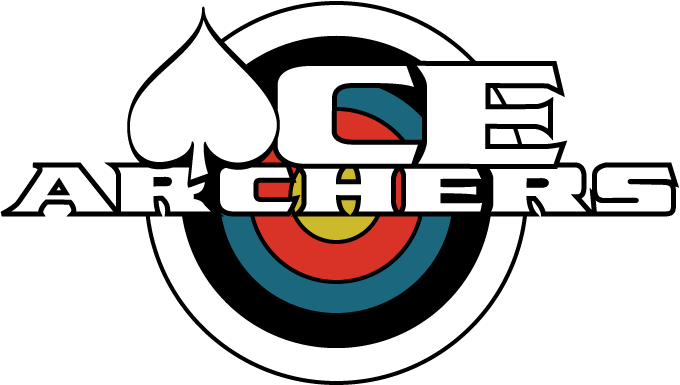Stance
The Stance is the placement and control of the lower half of the body, from the hips down. The KSL Open Stance creates a solid foundation for the shot. Once the proper stance is achieved, it does not change until after the shot is completed.
- One foot on each side of the shooting line about shoulder width apart.
- Equal weight on each foot.
- Toes of the Draw foot moved about 4 inches in front of the toes of the bow foot.
- Pivot on the toes and point the toes about 30° towards the target.
- The Hips always stay over the feet.
- The Shoulders start over the hips.
- The Legs are straight without lifting the knee caps.
- Use an arrow to point from the draw foot’s ball towards the center of the target.
- The bow foot should be about 2” (1 cm) behind the arrow.
- Lean forward by moving the nose about 1” to move 70% of the body weight onto the balls of the feet.
- Archers must keep a good stance throughout the NTS Shot Cycle.
Posture
A good posture connects the core to the shoulders allowing for greater draw strength. Good Posture allows for coiling to increase the connection between the legs and the upper body. Once the posture is achieved, the same posture is used throughout the Shot Cycle, except for the coiling that occurs when lifting the bow
- Tuck the hips under the backbone.
- Tighten the lower abdomen.
- Have the archer place their index finger at the bottom of their sternum (breast bone), then without moving their index finger, drop the sternum under the index finger. Once the sternum is dropped, the hand and finger came be moved.
- At the ankles, bend forward about moving the face forward about 1”.
- This results in 60% to 70% of the body weight being on the balls of the feet. The heels are still strongly connected to the floor/ground and equal weight on each foot.
Nock Your Arrow
Place your arrow on the string under the nocking point. The nocking point is usually a piece of metal on the bow string.
The fletchings (feathers or vanes) have special names. The fletching with a different color is called the index fletch. The other fletchings are call just called fletch.
For Recurve, Traditional Bows and Compound Bows released with your fingers the index fletch should point towards your body.
For Compound Bows used with a release, the index fletch would either point up or point down. For whisker bisquits and other capture rests the index fletch points up. For fork rests the index fletch points down. For blades, the index fletch points up.
